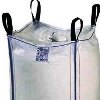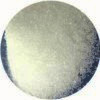| Anmol Chemicals is the pioneer manufacturers of Ammonium Sulfate, Pharmaceutical Excipients Chemicals in India. We offer Halal and Kosher Ammonium Sulfate made in an ISO9001, ISO22000 (FSSC22000) and cGMP certified facility. Our group has several manufacturing facilities spread across the world, supported by toll manufacturers and representatives in UAE, Europe, Africa, USA, China and has several associated manufacturing facilities spread across India. All the Information on Physics, Chemistry, Applications, Uses and Technology on Manufacture of Ammonium Sulfate is in these pages. |
| The units have one or more of the certifications like FDA GMP, ISO 9001, ISO 22000, HACCP, REACH, Kosher & Halal |





Ammonium Sulfate or Ammonium Sulphate SDS of Manufacturers
Ammonium Sulfate or Ammonium Sulphate Properties and Specifications of Manufacturers
Ammonium Sulfate SDS Safety Data Sheet
MSDS Sheet, Material Safety Data Sheet
Section1. Product Information
Product Name & Other Names : Ammonium Sulphate or Ammonium Sulfate or Diammonium Sulfate.
CAS Number: 7783-20-2
EINECS EC Number: 231-984-1
Molecular Formula : (NH4)2SO4
Molecular Weight: 132,14 g/mol
Relevant uses and uses advised against (if any): Industrial use only.
Section 2. Hazards Identification
GHS, Globally Harmonized System Classification in accordance with 29 CFR 1910
Classification according to Regulation (EC) No 1272/2008
Not a hazardous substance or mixture according to Regulation (EC) No. 1272/2008.
This substance is not classified as dangerous according to Directive 67/548/EEC.
Labeling according Regulation (EC) No 1272/2008
GHS Label Elements None |
Signal Words: None
Hazard not otherwise classified:
H320 May causes mild eye irritation.
H402: May be a little harmful to aquatic life.
Precautionary statements:
P262: Do not get in eyes, on skin, or on clothing.
P264 Wash skin thoroughly after handling.
P273 Avoid release to the environment.
P305+ P351 + P338 IF IN EYES: Rinse cautiously with water for several minutes. Remove contact lenses, if present and easy to do. Continue rinsing.
P337+P313 If eye irritation persists: Get medical advice/ attention.
P330: Rinse mouth.
P360: Rinse immediately contaminated clothing and skin with plenty of water before removing clothes.
Section 3. Composition/Information on Ingredients
Product Name & Other Names: Ammonium Sulphate or Ammonium Sulfate or Diammonium Sulfate.
CAS Number: 7783-20-2
EINECS EC Number: 231-984-1
Section 4. First Aid Measures
Always seek medical attention after first aid measures are provided.
Skin: Wash promptly with soap and water and flush with water until chemical is removed. Remove any contaminated clothing and wash before reuse. Get medical attention for irritation.
Eyes: Flush promptly with plenty of water for at least 15 minutes. Get medical attention.
Inhalation: Remove to fresh air. If breathing is difficult, give oxygen if a qualified operator is available. Get medical attention for irritation or discomfort.
Ingestion: If conscious drink 2 to 4 glasses of water and induce vomiting by touching back of throat with finger.
Section 5. First Aid Measures
Flash Point: Not applicable
Auto-ignition Temperature: Not applicable
Extinguishing Media: Any standard agent may be used. If involved in a fire, flood with water.
Unusual Fire and Explosion Hazards: Ammonium Sulfate decomposes at elevated temperatures to produce toxic fumes of ammonia and sulfur oxides. If mixed with strong oxidizers such as ammonium nitrate or potassium salts (nitrite, nitrate, or chlorate), a vigorous reaction may occur. Special Information: In the event of a fire, wear full protective clothing and NIOSH-approved self-contained breathing apparatus with full face piece operated in the pressure demand or other positive pressure mode. At high temperatures under fire conditions, it may produce toxic or irritating fumes. Fire-extinguishing work is done from the windward and the suitable fire-extinguishing method according to the surrounding situation is used. Uninvolved persons should evacuate to a safe place. Do not let the product enter drain.
Section 6. Accidental Release Measures
Personal precautions, protective equipment, and emergency procedures: Ventilate area of leak or spill. Avoid breathing dust/fumes/gas/mist/vapors/spray. Use individual protective equipment (waterproof boots, suitable protective clothing, safety glasses, etc.). Restrict unprotected personnel from the area. Prevent any contact with hot surfaces. Do not approach facing the wind. Do not touch the spilled material.
Environmental precautions: Do not let the product enter drains, soil, or water sources.
Methods and materials used for containment Cleanup procedures and Storage: Contain spilled material. Cover with an inert, non-combustible absorbent material, (e.g. sand, earth, diatomaceous earth, vermiculite). Vacuum or sweep-up and remove to an approved disposal container. Flush residue with water if permitted by applicable disposal regulations.
Section 7. Handling and Storage
Precautions for safe handling: Apply according to good manufacturing and industrial hygiene practices. Ensure proper ventilation. Wash thoroughly after handling. Do not drink, eat, or smoke while handling. Avoid contact with skin, eyes, and clothing. Minimize dust generation. Avoid breathing dust/fumes/gas/mist/vapors/spray. Avoid contact with eyes, skin, and clothing. Keep container tightly closed. Avoid ingestion and inhalation. Use individual protective equipment (waterproof boots, suitable protective clothing, safety glasses, etc.). Prevent any contact with hot surfaces.
Conditions for safe storage, including any incompatibilities: Store in cool, dry, and ventilated area away from heat sources and protected from sunlight in tightly closed original container. Keep air contact to a minimum. Store protected from heat, sparks and ignition sources and incompatible materials. Avoid contact with skin and eyes. Avoid inhalation of dust/mist/vapor. Do not store with incompatible materials like strong oxidizing agents, strong acids & bases. Avoid Sources of ignition. Direct sunlight.
Section 8. Exposure Controls/Personal Protection
Exposure Limits: No occupational have been established for this product. Keep it at <10mg/m3.
Engineering Controls: Provide local exhaust, if dusty conditions prevail.
Respiratory Protection: Where dusty or misty conditions require it, use a NIOSH approved dust or mist respirator for needed protection.
Ventilation System: A system of local and/or general exhaust is recommended to keep employee exposures as low as possible. Local exhaust ventilation is generally preferred because it can control the emissions of the contaminant at its source, preventing dispersion of it into the general work area.
Personal Respirators (NIOSH Approved): For conditions of use where exposure to dust or mist is apparent and engineering controls are not feasible, a particulate respirator may be worn. For emergencies or instances where the exposure levels are not known, use a full-face positive-pressure, air-supplied respirator.
Skin Protection: Wear protective gloves and clean body-covering clothing.
Eye Protection: Use chemical safety goggles and/or full face shield where dusting or splashing of solutions is possible. Maintain eye wash fountain and quick-drench facilities in work area.
Section 9. Physical and Chemical Properties
Appearance: Colorless to off-white crystals or granules.
Odor: Odorless
Odor threshold: Not available.
pH: 5-6 at 5% water solution.
Relative density: around 1.77
Boiling Point: > 280 °C (536 °F)
Melting Point: NA
Flash point: Not available.
Auto-ignition temperature: Not available.
Decomposition temperature: Not available.
Upper/lower flammability or explosive limits: Not available.
Vapor pressure: Not available.
Vapor density: Not available.
Evaporation rate: Not available.
Flammability (solid, gas): Not available.
Partition coefficient: n-octanol/water: Not available.
Solubility in Water: (Weight %) 38% solution @ 20C
Viscosity: Not available.
Section 10. Stability and Reactivity
Normally Stable (Conditions to Avoid): It is stable under normal conditions.
Incompatibles: Oxidizers, e.g. potassium salts -nitrate, nitrite, chlorate, also chlorine or hypochlorite. Strong acids & bases. Avoid contact with zinc-clad and copper.
Hazardous Decomposition Products: Ammonia and sulfur trioxide and sulfur dioxide gases.
Hazardous Polymerization: Will not occur.
Section 11. Toxicological Information
Immediate (Acute) Effects:
Acute Oral LD50 Rat: 2840 mg/kg
Acute Inhalation LC50 Rat: > 1000 mg/m³ 8 Hours
Acute Dermal: LD50 dermal rat: 2840 mg/kg (Rat)
Carcinogenicity: No component of this product present at levels greater than or equal to 0.1% is identified as probable, possible or confirmed human carcinogen by IARC.
Mutagenic Effects: Not available.
Teratogenic Effects: Not available.
Developmental Toxicity: Not available.
Reproductive Effects: No information available.
Section 12. Ecological Information
LC50 Fish-1: 5.2 - 8.2 mg/l (Exposure time: 96 h - Species: Oncorhynchus mykiss [static])
LC 50 Fish-2: 32.2 - 41.9 mg/l (Exposure time: 96 h - Species: Oncorhynchus mykiss [flow-through])
EC50 Daphnia-1: 423 mg/l (Exposure time: 24 h - Species: Daphnia magna)
EC50 Daphnia-2 14 mg/l (Exposure time: 48 h - Species: Daphnia magna)
EC50 Water flea (Ceriodaphnia dubia): 52 - 67 mg/l 48 hours
LC50 Pink salmon (Oncorhynchus gorbuscha): 0.068 mg/l 96 hours
LC50 Rainbow trout, donaldson trout (Oncorhynhus mykiss): 35.2 - 43.8 mg/l 96 Hours
Bioaccumulation: Not expected to bioaccumulate.
Persistence and Degradability: Not likely to persist.
Mobility: Likely to be mobile due to water solubility.
Section 13. Disposal Considerations
Other Disposal Considerations: The product is a fertilizer; therefore, waste ammonium sulfate might be used as a fertilizer. If discarded to waterways, it may promote eutrophication. Disposal must be in accordance with applicable disposal regulations.
Section 14. Transport Information
DOT USA, TDG Canada & ADR/RID Europe: Not Regulated
IMDG/IMO & IATA/ICAO: Not dangerous goods.
Section 15. Regulatory Information
USA Regulations:
California No Significant Risk Level: None of the chemicals in this product are listed.
Section 16. Other Information
Disclaimer:
**************************
Our company provides this MSDS sheet in good faith but makes no representation as to its comprehensiveness or accuracy. This Ammonium Sulfate SDS sheet is intended only as a guide to the appropriate precautionary handling of the material by a properly trained person using this product. The above information has been compiled from various sources and has the possibility of discrepancy and being out-dated information. Individuals receiving the information must exercise their independent judgment and do further search in determining its appropriateness for a particular purpose. In no case shall our company be liable to loss or damages by the product user.
**************************
Ammonium Sulfate or Ammonium Sulphate USP NF Analytical Reagent FCC Food Grade Manufacturers:
Anmol Chemicals
S-8, SARIFA MANSION, 2ND FLANK ROAD, CHINCHBUNDER, MUMBAI 400009, INDIA
TEL: (OFFICE) 91-22-23770100, 23726950, 23774610, 23723564. FAX: 91-22-23728264
e-mail: anmolc@mtnl.net.in

Exports to USA, Canada, UAE, Dubai, South Africa, Tanzania, Kenya, Nigeria, Egypt, Uganda, Turkey, Mexico, Brazil, Chile, Argentina, Europe Netherlands, Italy, Spain, Germany, Portugal, France, Malaysia, Indonesia, Thailand, Korea, Vietnam, Japan, etc.
Copyright and Usual Disclaimer is Applicable 28 December, 2021